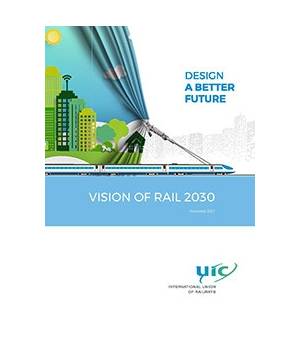
Vision of Rail 2030
By 2030, cars and lorries are being used less because more freight customers and passengers than ever are using the train. High-speed rail traffic has doubled globally from today’s levels and is now competing well with aviation on all short-haul and some medium-haul routes; many airlines have stopped running short-haul services and are working closely with rail to connect the two modes. Following a dip due to the coronavirus, rail passenger numbers have recovered and its market share has increased by 50% compared to pre-pandemic levels. Rail now accounts for 15% of global freight traffic and 12% of passenger traffic.
Mobility services take a systems-based approach led by a global decarbonation strategy built on the tryptic of “avoid, shift, improve”. Electro-mobility and automation have begun to change the way individual vehicles and fleets are used, and rail is the backbone of the e-mobility chain. Private ownership is decreasing, and shared fleets of electrical vehicles are interconnecting smoothly with logistics and public transport systems that adapt to demand in real time.
The increased popularity of trains and public transport has created millions of new skilled jobs, and people have been retrained and redeployed from fossil fuel industries, which are being phased out. The railways are working in collaboration with the entire supply chain with a clear sustainable procurement policy to reduce emissions, save natural resources and provide good working conditions.
| Author | UIC |
| ISBN | 978-2-7461-3137-8 |
| Pages | 16 |
Data sheet
- Language
- English
- Format
- Downloadable
- Edition
- Ed. no.1
- Edition date
- 01/11/2021
- Publication date
- 26/10/2021
- Page number
- 16
- sku
- 5-21008E-PDF
- Reference
- 5-21008E
 Cookie preferences
Cookie preferences

